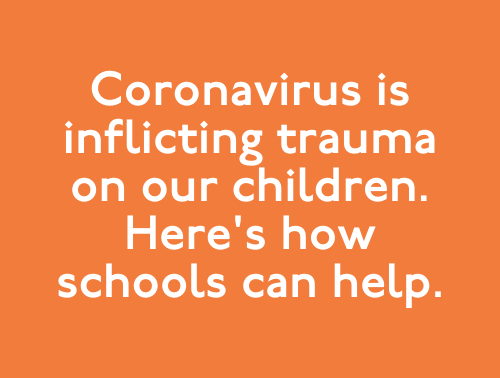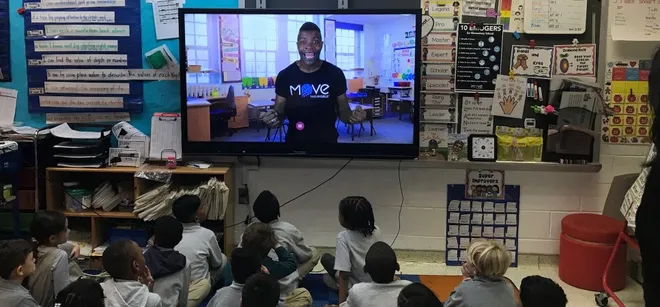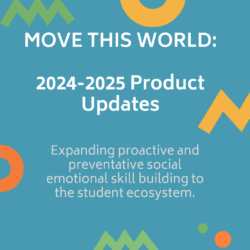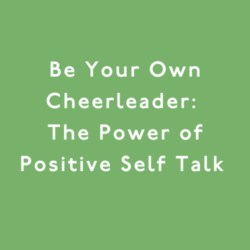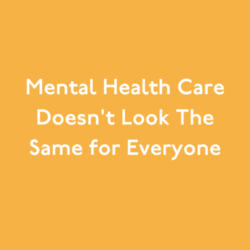This piece originally appeared in USA Today on May 19, 2020.
COVID-19 will leave a lasting mark. We’re going to need support to heal and grow in its aftermath.
Whether or not we’re willing to admit it, nearly all of us are experiencing a form of trauma because of the coronavirus pandemic. Uncertainty, stress and anxiety are running high.
A recent Common Sense Media and Survey Monkey report found that 61% of teens surveyed reported feeling worried about themselves (or someone in their family) getting sick; 63% reported feeling worried about their family’s ability to make a living; and 42% reported feeling more lonely than usual.
Many parents have lost work and are struggling to provide for their families’ basic needs. Other parents are attempting to work full-time while also caring for their children and overseeing their remote learning. We are grieving the loss of the lives we once knew.
For students, not being able to see friends, participate in regularly scheduled activities or engage in their normal routines is incredibly disruptive. And we, as parents, are learning just how hard it is to get our kids to focus when they’re emotionally distant or distracted — a task even more difficult for educators.
With schools across the country closed, districts acknowledge that student learning capacity is taking a hit. While we’re more forgiving about the number of academic hours logged, school districts can step up in other ways now and when we prepare to return: by supporting students’ social and emotional wellness.
Students need social and emotional support, and this cannot just be the job of therapists and mental health professionals, especially when schools already face a shortage of psychologists and counselors. The current 430-to-1 ratio of students to counselors in the U.S. falls far short of the American School Counselor Association recommendation of 250-to-1.
Teachers, whether they’re working in buildings or remotely, may interact with their students more regularly than anyone else. They need the tools to be able to proactively check in with students’ feelings and practice social emotional skills that will help students cope through the pandemic and beyond.
See also: What is SEL?
Beginning classes with a quick check in can go a long way. Asking students to share how they are feeling, a challenge they are facing, or a hope they have for the week can help educators gauge what burdens students are carrying. Every student might not have the words or vocabulary, so using facial expressions or creative modes such as drawing or poetry can bridge the gap. Guiding these conversations can feel tricky and maybe even uncomfortable at first, which is why teachers need a structured framework.
Some people argue that these skills should be practiced in the home, and not in the school. But we’re now in a position where school is in the home. We have a huge opportunity to distribute virtual social and emotional learning tools across the country to support our students, teachers and school communities through this pandemic and beyond.
Stress affects the ability to learn
The fact is, our children’s stressors and their inability to properly manage their emotions prevent them from being effective learners. Much like you wouldn’t expect to run a marathon without fueling your body, we cannot expect students to learn without strengthening their minds and their hearts. With studies that show extreme stress can disrupt the architecture of a growing brain, grades don’t matter so much now.
With the emphasis on remote instruction and thinking through what school will look like when we return to “normal,” I urge districts and policy makers to invest in the healing and rebuilding of our whole selves that’s required for us to function at the highest level.
To do this right, we need to teach skills such as emotional identification, expression and management alongside foundational relationship skills and problem-solving strategies. When we provide this foundation for all students, we cultivate a more supportive learning environment and can better understand which students need additional support.
Help students process emotions
COVID-19 will leave a lasting mark. We’re going to need support to heal and grow in its aftermath. While states are re-opening and discussing how to eventually go back to school, most of the focus is on physical safety — masks, temperature checks, extra hand sanitizer, maintaining distancing. But how will your first-grader feel when they can no longer see the smile behind their teacher’s mask, exchange a high five to celebrate a job well done, or receive a hug when they seek a moment of comfort? How will they learn if they’re afraid?
Social emotional learning supports will be essential in helping students process the feelings and emotions that have surfaced as a result of living through a pandemic. Those same supports will help build a foundation for students to express themselves in healthy ways so they can learn and grow for the rest of their lives.
The Nation’s Leading SEL Company
Move This World is the leading provider of social emotional learning (SEL) multimedia experiences for students, teachers, and families. Our SEL programs are customized for PreK-12 students and are delivered through short interactive lessons with the goal of empowering students to navigate the rapidly-changing realities of their world – both in the classroom and throughout their lives. The impactful yet simple Move This World SEL curriculum allows educators and families to incorporate Social Emotional Learning into their schedules every day, without planning or prep.
Contact us to learn more about SEL Grants and bringing Social Emotional Learning to your classroom.
Related links:
